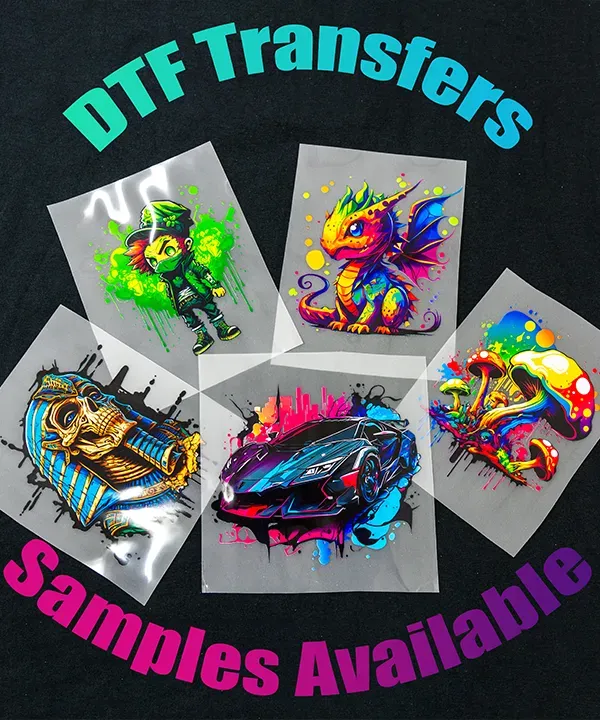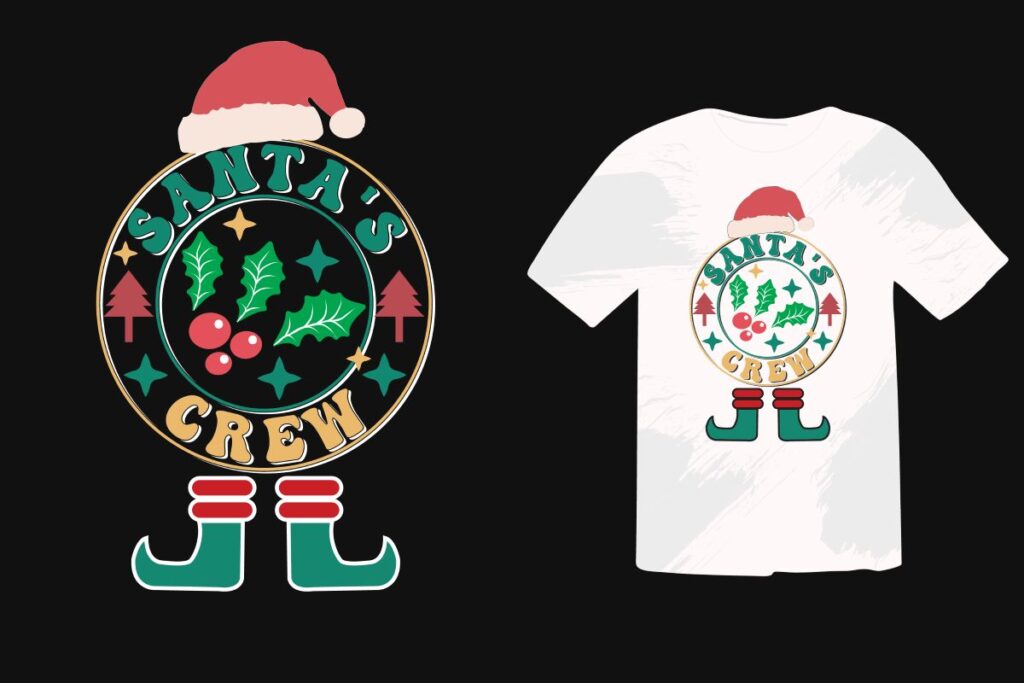DTF transfers, or Direct-to-Film transfers, are ushering in a new era in the fabric printing realm, offering unique customization options that are both vibrant and efficient. Unlike traditional printing techniques, DTF printing boasts a process that seamlessly integrates artwork on a special film, which can then be easily transferred to various fabrics without the need for pre-treatment. This modern approach not only enhances the speed of production but also allows for intricate designs and bold colors that resonate with today’s consumers. As businesses seek sustainable printing options, DTF printing advantages become increasingly clear, effectively meeting the market demand for custom fabric transfers. Join us as we delve deeper into how DTF technology is reshaping the landscape of fabric printing, making it more accessible and environmentally conscious than ever before.
Direct-to-Film transfers, often referred to as DTF printing, are revolutionizing how designs are applied to textiles in remarkable ways. This innovative technique enables creators to print directly onto a specially formulated film, which can then be transferred onto fabric with heat and pressure. The simplicity and efficiency of this method stand in stark contrast to more traditional approaches, such as Direct-to-Garment printing, enabling a broader spectrum of applications and a decrease in production times. With an emphasis on custom fabric transfers, this printing process not only caters to the demand for personalized items but also aligns with the ethical considerations of sustainable printing options. As we explore the nuances of this versatile technology, we can expect DTF printing to carve out a significant niche within the fabric printing industry.
Understanding DTF Printing Technology
Direct-to-Film (DTF) printing is a cutting-edge method that offers a new dimension to the fabric printing industry. This technology uses a specialized process where vibrant designs are printed on a film rather than directly on the fabric. By utilizing high-quality inks and advanced printers, DTF printing creates graphics that are not only visually stunning but also durable when transferred onto various substrates such as cotton, polyester, or even blends. This method simplifies the traditional fabric printing process and eliminates the need for fabric pre-treatment, making it an attractive option for businesses aiming for efficiency and cost-effectiveness.
The versatility of DTF printing is one of its key strengths. Because it enables high-quality prints on a broad range of fabric types, businesses can cater to diverse customer needs, from custom apparel to promotional items. This adaptability is especially beneficial for small and medium-sized enterprises, which can offer personalized products without the significant overhead costs associated with other printing methods like screen printing or Direct-to-Garment (DTG) printing. As a result, DTF printing has quickly become a preferred choice for entrepreneurs seeking to provide unique and high-quality items.
The Advantages of DTF Transfers in Fabric Printing
DTF transfers present several advantages that appeal to modern manufacturers and consumers alike. One of the compelling benefits is the rich color vibrancy and intricate detail that can be achieved, enabling businesses to create eye-catching designs. Unlike screen printing, where color limitations can hinder creativity, DTF transfers allow for full-color graphics that pop on any fabric type. This quality is essential in a marketplace saturated with options, where standing out is crucial for brand recognition and customer satisfaction.
Moreover, DTF printing is known for its cost-effectiveness, particularly for smaller production runs. Traditional methods often require minimum order quantities, which can be a deterrent for startups. In contrast, DTF technology allows businesses to produce single items or small batches without incurring excessive costs. This flexibility not only encourages creativity and experimentation but also aligns with the rising demand for sustainable and personalized products. As more consumers seek unique clothing and accessories, DTF transfers provide an efficient way to meet this need without sacrificing quality.
Sustainable Options in DTF Printing
As the world shifts towards eco-friendly practices, the DTF printing industry is also embracing sustainable options. Innovations in eco-friendly inks have emerged, which significantly reduce the environmental impact of the printing process by minimizing harmful emissions and waste. These inks allow manufacturers to produce vibrant designs while catering to a conscious consumer base that values sustainability. By choosing sustainable practices, businesses in the DTF market can demonstrate their commitment to environmental responsibility, helping them to cultivate a positive brand image.
Additionally, sustainable DTF printing processes often result in less water and energy usage compared to traditional fabric printing methods. The ability to print directly onto a film and transfer it onto fabric reduces the need for extensive water-based cleaning processes typical of screen printing. By leveraging these sustainable printing options, manufacturers not only contribute positively to the planet but also attract customers who prioritize environmental consciousness when making purchasing decisions.
The Future of DTF Printing
Looking into the future, the DTF printing industry is poised for significant advancements. With ongoing research and development, we can expect improvements in print quality, speed, and efficiency, which will further solidify DTF’s position within the fabric printing landscape. As technology evolves, manufacturers are likely to introduce automated systems that will streamline production, allowing businesses to scale up operations without compromising on quality or increasing costs.
Furthermore, the integration of artificial intelligence and machine learning in printing processes may enhance the customization experience for consumers, enabling them to receive more personalized products tailored to their individual preferences. As the demand for customization continues to rise, DTF printing will play a crucial role in satisfying this market need, paving the way for innovative applications across various sectors, from fashion to home decor and promotional merchandise.
DTF Printing vs. Traditional Fabric Printing Methods
When comparing DTF printing to traditional methods like Direct-to-Garment (DTG) and screen printing, several key differences emerge that highlight DTF’s advantages. Unlike DTG, which requires pre-treatment of the fabric for adhesion and color saturation, DTF transfers can be applied to a variety of fabric types directly, saving time and reducing production complexity. Additionally, while screen printing excels in bulk printing, it often has limitations regarding the number of colors and designs that can be produced economically. In contrast, DTF offers the flexibility to create multi-colored designs on-demand without significant setup costs.
Another significant distinction lies in the durability and washability of prints. DTF transfers have been shown to maintain their vibrancy and integrity over many washes, a crucial factor for customers looking for long-lasting apparel. While traditional methods can often risk fading or cracking over time, DTF technology leverages high-quality inks and advanced adhesives, ensuring that designs remain intact and visually appealing.
Challenges of Adopting DTF Printing
Despite the many advantages, businesses must navigate certain challenges when adopting DTF printing technology. Equipment investment is one of the primary concerns, as companies are required to purchase specific printers and heat presses designed explicitly for DTF applications. Furthermore, there can be a learning curve associated with operating new machinery and ensuring the right settings for optimal results. Companies need to balance these initial costs and adjustments against the long-term benefits DTF printing can offer.
Additionally, achieving consistency in print quality requires meticulous attention to detail in both the printing and transfer processes. Issues such as film adhesion can arise if the technique used is not implemented properly, leading to potential product failures and customer dissatisfaction. To mitigate these risks, businesses must invest in thorough training and quality control measures to ensure that their DTF prints meet high standards of durability and aesthetic appeal.
Frequently Asked Questions
What are the main advantages of DTF Transfers in fabric printing?
DTF Transfers offer several advantages in fabric printing, including vibrant colors, detailed designs, and the ability to print on various fabric types without pre-treatment. This technology is also cost-effective and accessible for small businesses, allowing for low minimums and quick turnaround times. Furthermore, eco-friendly DTF inks are available, supporting sustainable printing options.
How does the DTF printing process work for custom fabric transfers?
The DTF printing process involves printing a design onto a special film using DTF printers equipped with specialized inks. An adhesive powder is then applied to the printed film. When heat and pressure are applied, the design transfers seamlessly onto the fabric. This process enables high-quality, custom fabric transfers that adhere well and maintain durability even after multiple washes.
Are DTF Transfers suitable for all types of fabric printing applications?
Yes, DTF Transfers are highly versatile and suitable for various fabric printing applications, including apparel, home decor, and promotional items. They can effectively print on cotton, polyester, and fabric blends, making DTF a popular choice for creating custom fabric products across different industries.
What challenges should be considered when using DTF printing technology?
While DTF printing is advantageous, users should consider challenges like the initial investment in specialized printers and heat presses. Additionally, ensuring proper film adhesion and the long-term durability of transfers is crucial. Businesses must implement rigorous testing and quality control to maintain high print quality and customer satisfaction.
How does DTF printing compare to other fabric printing methods like DTG?
DTF printing is often viewed as more efficient than Direct-to-Garment (DTG) printing due to its ability to print without pre-treatment and offer better cost efficiency for low quantities. DTF transfers provide vibrant colors and intricate designs, making them an attractive alternative to DTG, particularly for custom orders and small businesses.
What trends are shaping the future of DTF Transfers in the fabric printing industry?
The future of DTF Transfers is being shaped by technological advancements that enhance print speed and quality, alongside a strong focus on sustainable printing options. The increasing demand for personalized and eco-friendly products is driving innovation in DTF technology, paving the way for businesses to adopt automated and efficient workflows for custom fabric printing.
| Key Point | Details |
|---|---|
| Introduction | DTF transfers make customization and vibrant designs highly accessible, outpacing traditional printing methods. |
| What is DTF Printing? | Designs are printed on special film and then transferred onto fabric, resulting in vibrant images without requiring fabric pre-treatment. |
| Growth in Popularity | Increased demand for personalized fabric printing makes DTF popular, especially among startups and small businesses. |
| Technological Advancements | Recent advancements improve print quality; eco-friendly inks satisfy the demand for sustainability. |
| Market Insights | DTF printing market expected to grow due to consumer preferences for customization across various industries. |
| Challenges and Considerations | Specific hardware needed; quality control is critical to ensure durability of prints. |
| Future Prospects | Ongoing innovation will boost print speeds and sustainability measures in the DTF sector. |
Summary
DTF Transfers are a game changer in the fabric printing industry, providing a perfect blend of quality, efficiency, and customization. These transfers cater to the increasing consumer demand for personalized products, allowing businesses, especially small and medium-sized operations, to compete in a dynamic market with lower initial investments. As we look to the future, DTF technology promises continued advancements, driving the industry towards more sustainable practices and enhanced production processes. This momentum not only reinforces DTF transfers as a vital component of modern fabric printing but also highlights their potential to empower creators and businesses to bring their unique designs to life.


